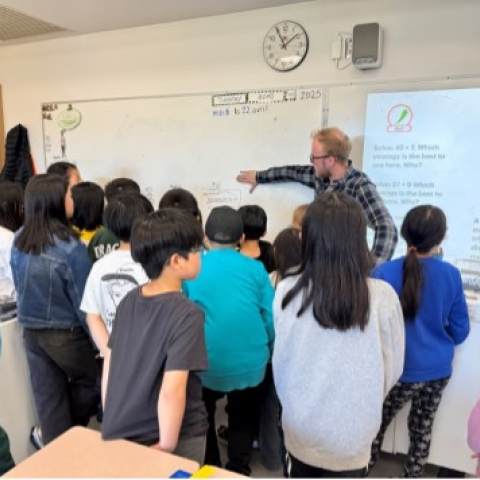Inquiry Grant-Numeracy
Over the past few months, a group of DeBeck staff members has been engaged in an Innovation Grant project with a focus on numeracy. During our initial scanning phase, we observed that many students demonstrated competence with operational fluency using strategies they were most comfortable with. However, we also noticed that students often struggled to apply a variety of strategies and to communicate their thinking in multiple ways. Transferring these skills to word problems and open-ended numeracy tasks emerged as a key area for growth.
Additionally, we recognized an opportunity to be more intentional in teaching and making math vocabulary visible in our learning environments.
This led us to our inquiry question:
How can we use instructional routines, vocabulary development, self-assessment, and assessment practices to foster problem-solving and communication skills in our students, thereby strengthening their numeracy foundations?
Our goals for student learning included:
- Developing and applying a variety of computational strategies to numeracy tasks
- Building math vocabulary and increasing its visibility in classrooms
- Strengthening self-assessment and reflection practices in mathematics
As part of this grant, staff were given release time to collaborate, co-teach, reflect, and plan. Together, staff and students engaged in a variety of instructional practices, including:
- Vertical math problem-solving
- Math workshops
- Number Talks
- Manipulative-based learning and loose parts (e.g., clothesline math, fraction tiles)
- Four-Quadrant Math (Words, Pictures, Numbers, Real-World Connections)
- “Check Your Understanding” templates
Through this work, we noticed the following shifts in student learning:
- Increased engagement and participation in math tasks
- Greater comfort with flexible thinking and multiple problem-solving approaches
- A willingness to share their thinking with peers
- More frequent use of mathematical language, especially during collaborative tasks
- A deeper understanding of self-assessment and reflection in relation to their math learning
Next steps in our learning journey:
- Create additional vertical spaces in classrooms to promote visible thinking and mobility
- Continue exploring and practicing rich numeracy tasks with students
- Further embed math vocabulary across the school to develop a shared language
- Provide more opportunities for collaboration between staff, especially across primary and intermediate grades
- Foster discussions around developing shared math resources for our school community
We are excited to continue this journey and build on the positive momentum we’ve seen in our students’ engagement and growth in numeracy!



